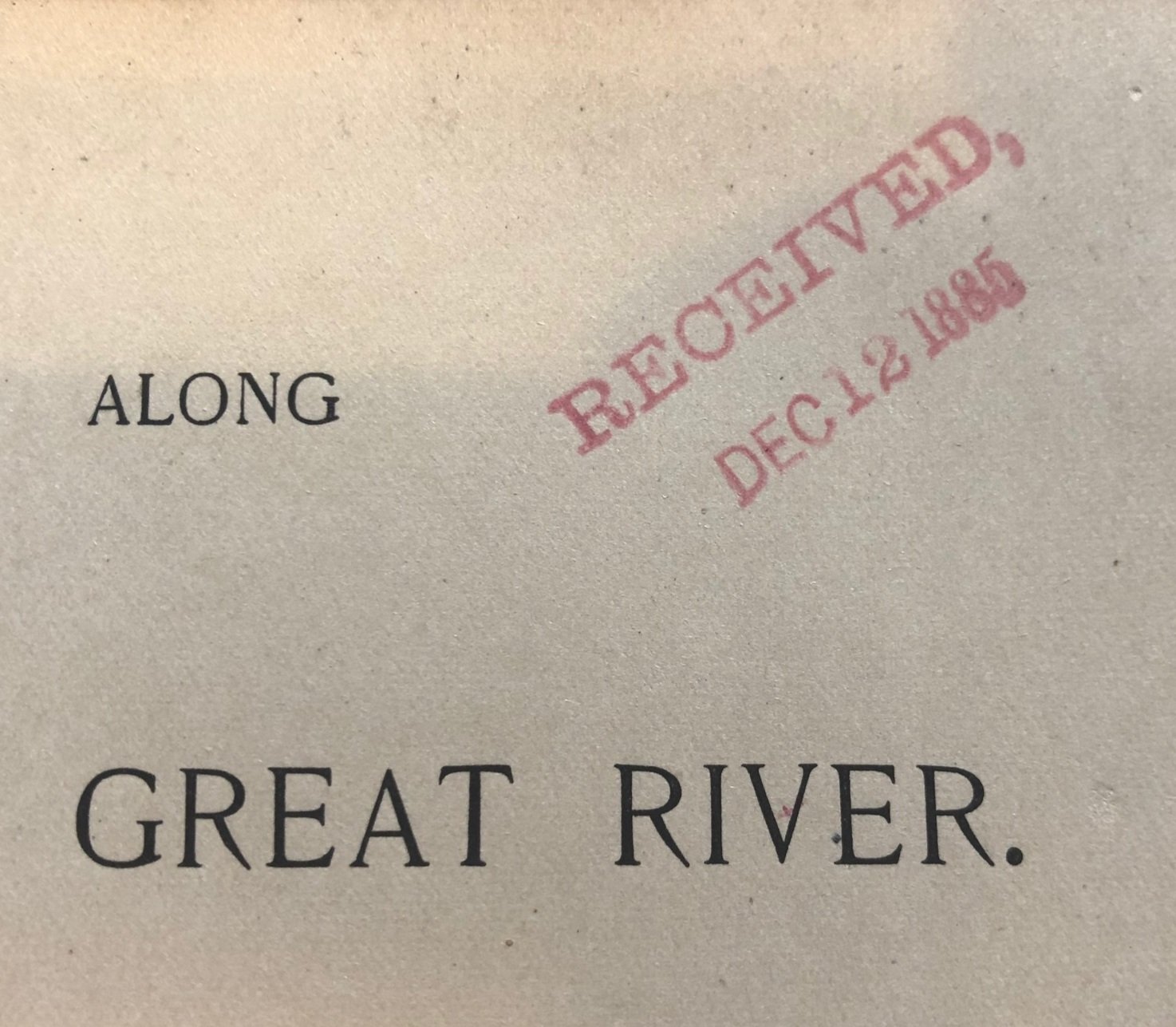The 1883 Yukon Rafting Travelogue That Makes Me Shake My Head
Today, I met Frederick Schwatka, an Army lieutenant and explorer who, in 1883, floated with six other men down all 1,300 miles of British Columbia’s and Alaska’s wild, unforgiving Yukon River on a purpose-built river boat.
Did I say boat? I meant raft— a simple, unwieldy, 16’x42’, almost silly-looking log raft with maximum row speed of 1-mile per-hour (hold onto your fur-lined hats!)—for one of the most important river journeys in western exploration.
Published in 1885, Along Alaska’s Great River is Schwatka’s travelogue from Portland, Oregon, ascending the inland (or inside) passage to Alaska as far as the “Chilkat country,” where he and his men employed over three-dozen Chilkats to help them traverse the glacier-clad Chilkoot Pass of the Alaskan range to the headwaters of the Yukon. From there, they passed through 150 miles of lakes, rapids, etc., before floating down the main Yukon flow for over 1,300 miles. At the time, it was the longest raft journey ever recorded ‘in the interest of geographical science.’
And they did all on this…
The thought of this 1,300-mile journey being undertaken aboard a raft without cover is mind-boggling. Even Schwatka, who’d previously endured a grueling 2,700-mile sled exploration to search for the lost Franklin Expedition, scratched his head in retrospect.
“Looking back, it seems almost miraculous that a raft could make a voyage over thirteen hundred miles, the most difficult part of which was unknown…The raft is undoubtedly the oldest form of navigation extant, and undoubtedly the worst.”
In books with prose often as dry as their centuries-old bindings, I was pleased to see Schwatka’s story peppered with playful wit, bordering on Twain—like here, on the way north from Portland, when his positioning ship stopped in Victoria, British Columbia on the Queen’s birthday.
“Our vessel tooted itself hoarse outside the harbor to get a pilot over the bar (shoal), but none was to be had till late in the day, when a pilot came out to us showing plainly by his condition that he knew every bar in and about Victoria.”
From Victoria, the ship continued north, through Queen Charlotte Sound, which I’ve sailed through several times, the most recent with glassy waters made rough only by surfacing whales. Schwatka and his men weren’t so lucky.
“Received, Dec 12, 1885”
“…we again felt the “throbbing of old Neptune’s pulse,” and those with sensitive stomachs perceived a sort of flickering of their own.”
Learn as you go. That’s a key takeaway from my research of historical travelogues. Set a goal. Make it huge. Get people excited about it. Raise money to do it. Plan as well as possible. Start it. Then fight like hell to survive because your idea of your capabilities relative to nature’s is nowhere near correct. The seven-man raft crew seemed especially to have their hands full in this regard.
“…too often in the most trying places our experiments in testing the questions were failures, and with a sharp snap the oar would part…and the craft like a wild animal unshackled would go plowing through the fallen timber that lined the banks…We slowly became practical oar makers, however, and toward the latter part of the journey had some crude but effective implements that defied annihilation.”
Once again, I am astounded at the resolve and skill of these men to accomplish such a herculean task. That of the topographer is especially impressive.
“The errors in dead reckoning of Mr. Homan, my topographer, in running from Pyramid Harbor in Chilkat Inlet to Fort Yukon, both carefully determined by astronomical observations and over a thousand miles apart, was less than one percent…”
Like most explorers of the day who penned a travelogue, Schwatka is all plot, tight lipped with private feelings. But—be it a square-rigger or a bunch of logs lashed together—a captain’s bond with his vessel is special and unique in exploration—enough to make the crustiest sailor shed a tear. Here, Schwatka’s words at the end of the story say it all.
“Here too, the old raft was laid away in peace, perhaps to become kindling-wood for the trader’s stove. Rough and rude as it was, i had a friendliness for the uncouth vessel, which had done such faithful service, and borne us safely through so many trials, surprising us with its good qualities. It had explored a larger portion of the great river than any more pretentious craft, and seemed to deserve a better fate.”
An incredible accomplishment, and a nice read overall. Unfortunately, Schwatka’s personal story ended a few years later, with his death at 43—a morphine overdose deemed suicide. He seemed to deserve a better fate too.
Along Alaska’s Great River by Frederick Schwatka was read thanks to a membership at The Athenaeum of Philadelphia.




